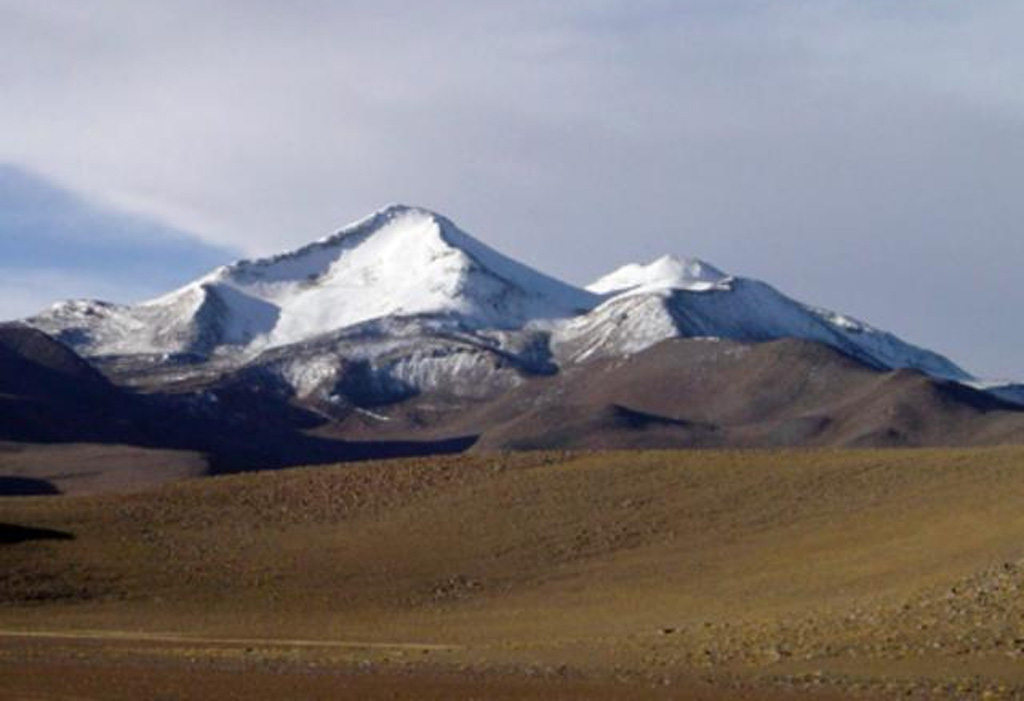Image GVP-10847

Snow-capped Uturuncu, the highest peak of SW Bolivia, rises to 6008 m. Andesitic and dacitic lava flows dominate on Uturuncu, seen here from the south. Although andesitic and dacitic lava flows display well-preserved flow features, youthful-looking summit lava flows show evidence of glaciation. Two active sulfur-producing fumarole fields are located near the summit. Large-scale ground deformation observed beginning in May 1992, along with recently detected seismicity, indicates that a magmatic system is still present.
Photo by Steve Sparks, 2003 (University of Bristol).
![]() This image is made available under the Creative Commons BY-NC 4.0 license terms.
This image is made available under the Creative Commons BY-NC 4.0 license terms.

Uturuncu
